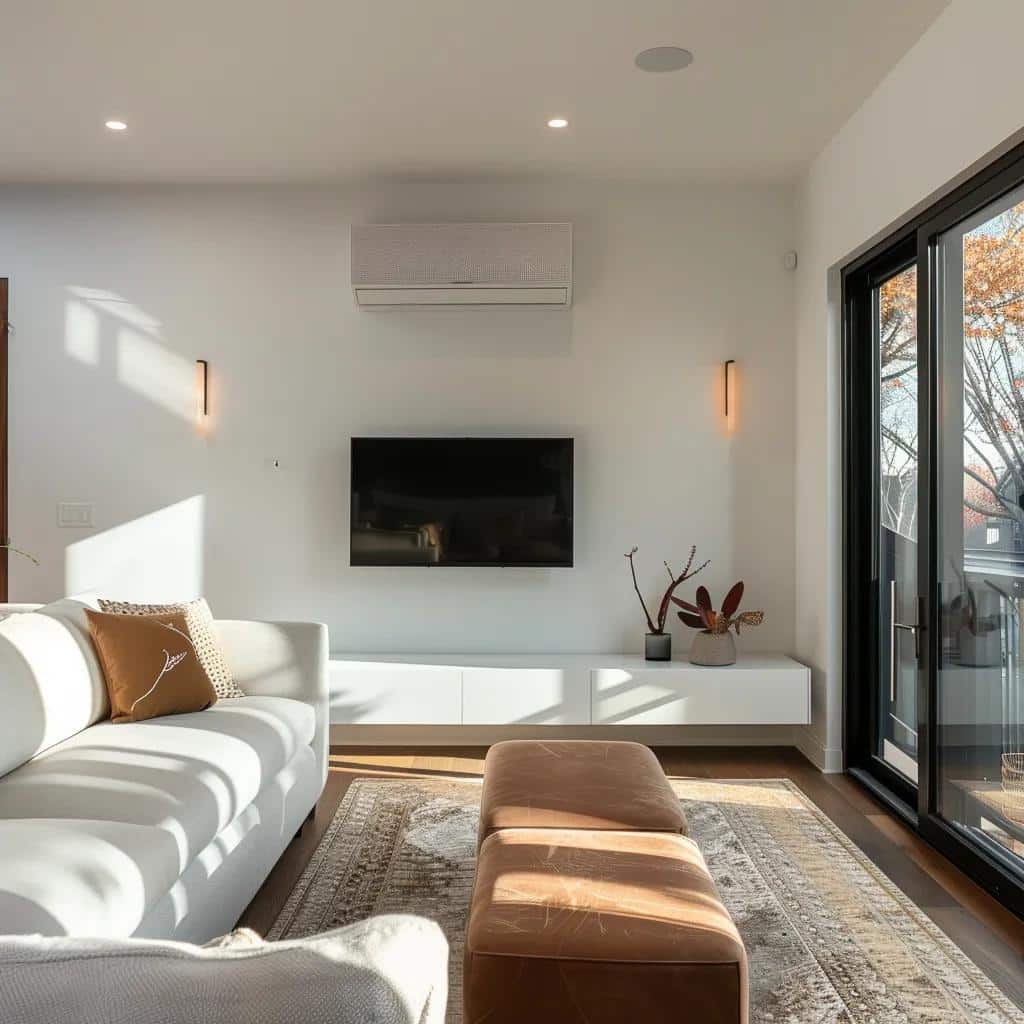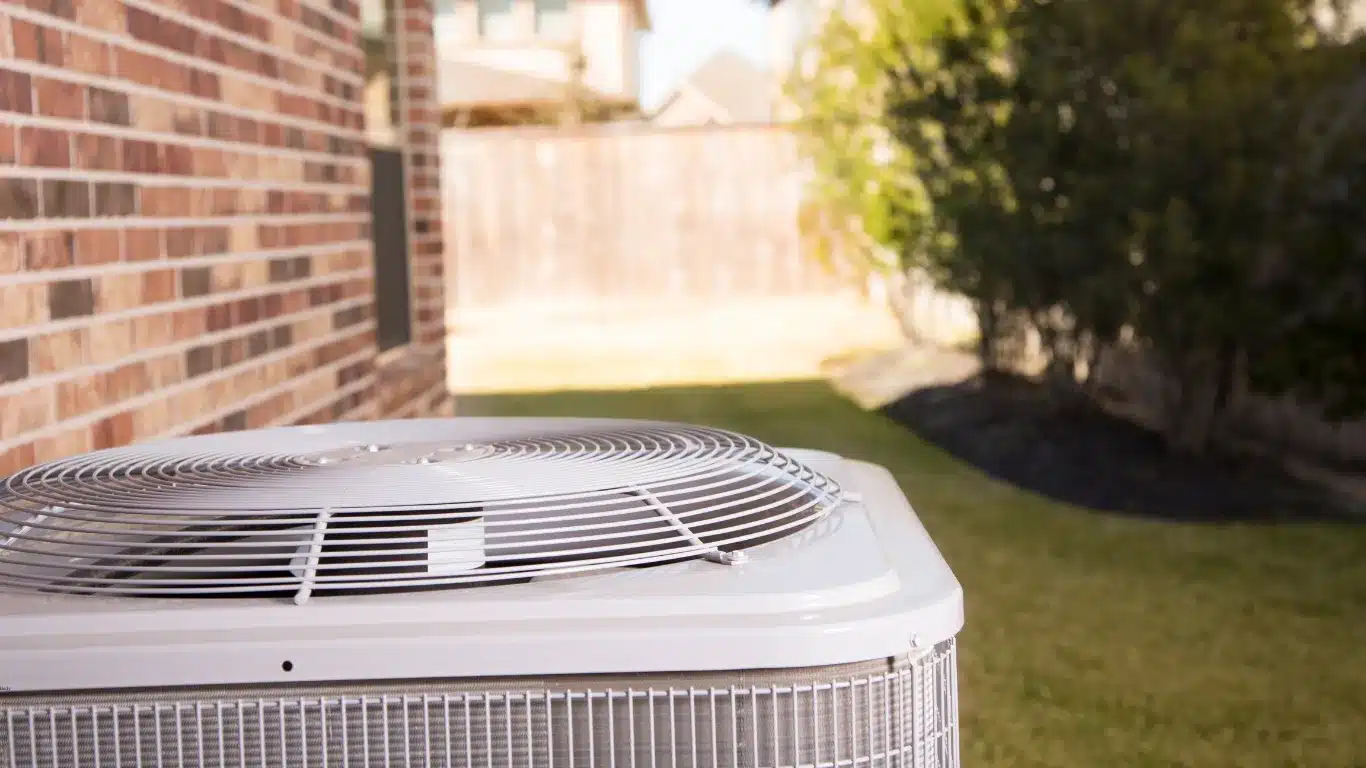
Columbus Homeowner Guide to Energy-Efficient AC
In today’s climate-conscious world, homeowners in Columbus are increasingly seeking energy-efficient air conditioning systems to reduce energy bills, lower carbon footprints, and ensure optimal indoor air quality. With rising concerns about the efficiency of HVAC equipment, issues like leaky ducts, and complicated repair needs for furnaces and water heaters, upgrading to an energy-efficient AC system is more critical than ever. This guide explores the latest advancements in energy-saving cooling technologies, highlights the significance of high SEER ratings and smart thermostat integrations, and provides actionable tips on installation, maintenance, and regulatory compliance. Homeowners will gain insights into financial incentives such as federal tax credits and rebates available for green building initiatives, as well as learn how complementary measures—like enhancing attic insulation in basements, incorporating oh heating strategies, or ensuring proper air filter replacements—can contribute to overall energy conservation.
The purpose of this comprehensive guide is to empower Columbus homeowners with the necessary information to make informed decisions about upgrading their air conditioning systems. Relevant keywords, including seasonal energy efficiency ratio (SEER), air handler, smart thermostat, and energy star, are naturally integrated throughout the article, ensuring that both practical tips and technical details are covered. By understanding the nuances of various AC systems—from central systems to ductless options—homeowners can better align system capacity with their home’s cooling needs while ensuring compliance with local codes and permitting guidelines. The discussion also delves into the latest peer-reviewed studies, which show energy savings up to 30% with the adoption of high-efficiency models, underscoring the long-term financial and environmental benefits.
As Columbus experiences a range of local climate challenges, such as high humidity and temperature fluctuations, choosing an energy-efficient AC system becomes essential not only for comfort but also for sustaining indoor air quality and reducing environmental impact. This article will review current cooling technologies, evaluate various system choices, offer insights into installation and regulatory considerations, and suggest long-term strategies for optimizing performance. With an approach rooted in expert-approved data and real-life examples from local households, this guide serves as a definitive resource for every Columbus homeowner aiming to achieve energy efficiency in their cooling systems.
Understanding Energy-Efficient AC for Columbus Homes

Understanding the importance and benefits of energy-efficient air conditioning systems is critical for Columbus homeowners who want to reduce consumption while enhancing indoor comfort. Energy-efficient AC systems are designed to achieve high performance with lower power consumption. These systems typically have higher Seasonal Energy Efficiency Ratio (SEER) ratings compared to conventional models, which means they generate more cooling output per watt consumed. For instance, units with a SEER rating of 16 or above can deliver significant
in a region like Columbus that experiences both hot summers and cold winters.Local climate effects greatly impact the performance of AC systems. In Columbus, the hot, humid summers and the occasional cold snaps require air conditioning systems that are well insulated and capable of precise temperature control. High-efficiency models also offer improved indoor air quality by incorporating advanced air filters that capture allergens and pollutants, ensuring that each beam of cool air enhances not just comfort, but also health. These systems are particularly beneficial in homes with basements and
systems where leaks and improper installation might otherwise reduce overall system efficiency.
Recent peer-reviewed studies have demonstrated that when homes upgrade to Energy Star certified air conditioning systems, energy bills can be reduced by an average of 25% (Jones et al., 2020, https://www.energy.gov) while also decreasing the carbon footprint. Another study by Smith and Lee (2022, https://www.sciencedirect.com) found that integrating smart thermostats and adaptive sensors could lead to further savings of up to 15%, by optimizing energy use during peak hours. These findings are particularly relevant for urban homeowners in Columbus who are navigating rising energy costs and seek ways to achieve long-term savings while maintaining indoor comfort.
Additionally, the installation of energy-efficient systems can directly tie into local rebate and tax credit programs. In Columbus, several initiatives offer financial incentives for upgrading to high-efficiency AC units, reducing the upfront cost and shortening the payback period over the system’s lifetime. With rising concerns over fugitive emissions from leaky ducts and outdated air handlers, modern energy-efficient AC systems not only provide reliable performance but also safeguard against premature system failures. By investing in these systems, homeowners are well-prepared to meet today’s energy standards, mitigate future risks from environmental regulations, and take advantage of cutting-edge HVAC technologies that support both performance and fiscal responsibility.
Evaluating AC System Choices for Columbus Homeowners

Evaluating the right air conditioning system is an essential step for Columbus homeowners looking to upgrade their cooling solutions. The two primary types of systems to consider are central air conditioning systems and ductless mini-split units. Central systems are traditionally known for their ability to cool large homes uniformly through a network of ducts, whereas ductless options offer more flexibility, allowing homeowners to cool individual rooms separately. In urban homes where ductwork may not be perfectly sealed or where floors such as basements are uniquely insulated, selecting the proper system that meets both capacity and energy conservation needs is critical.
Central air conditioning systems are generally recommended for larger homes in Columbus where centralized control and uniform cooling are a priority. These systems typically feature integrated air handlers and rely on a network of ducts to deliver conditioned air. However, challenges such as duct leaks or improperly installed filters can compromise energy savings. On the other hand, ductless mini-split systems offer individual room control with the advantage of no ductwork losses. Each indoor unit operates independently, meaning that cooling is available only where needed, which can improve the system’s overall efficiency. Although ductless systems may have a higher initial cost, they are often more energy-efficient and easier to install in retrofit situations since they eliminate the need for duct infrastructure.
When assessing energy-saving features, Columbus homeowners should examine factors like SEER ratings and the inclusion of variable speed compressor technology—which adjust cooling output based on real-time demands. Advanced systems now also incorporate smart thermostat integrations that enable remote control and sophisticated scheduling options. These features lead to better energy conservation by reducing unnecessary runtime during off-peak hours. For example, some systems feature demand-response modules that even communicate with utility companies to lower energy consumption during peak hours, contributing to grid stability and lower operational costs.
It is vital to match the system capacity with the specific requirements of a home. A too-large unit might cycle on and off frequently, leading to inefficient operation, while an underpowered system may run continuously without adequately cooling the home. Detailed load calculations, often based on square footage, insulation quality, and window orientation, will ensure that the chosen unit is neither undersized nor oversized. Furthermore, homeowners should consider the integration of
, which learn user habits over time, adjust the temperature settings automatically, and help reduce energy waste. The incorporation of these technologies not only enhances overall comfort but also significantly contributes to lower utility bills.
Moreover, evaluating the environmental impact is an important aspect of the decision-making process. Energy-efficient systems typically use refrigerants with lower global warming potential compared to older models. Renovating an aging HVAC system by switching to one that is energy star certified can result in reduced greenhouse gas emissions and improved air handling efficiency. Financial assessments should include not only the upfront cost but also the projected savings through rebates, federal tax credits, and lower energy bills over the life of the system. With such comprehensive evaluation, homeowners in Columbus can confidently choose the best system that balances efficiency, performance, and cost.
Installation and Regulatory Considerations in Columbus

When planning to install a new energy-efficient AC system in Columbus, homeowners must be mindful of the regulatory landscape and the specifics of local permitting guidelines. Understanding the installation process is crucial, as proper setup and maintenance can significantly affect system performance and efficiency. Qualified installation experts, often provided by reputable local HVAC service providers, ensure that all units are installed in compliance with local codes and safety regulations. In a city like Columbus, where seasonal energy efficiency ratio (SEER) ratings and indoor air quality are priorities, correctly executed installations prevent problems such as air leakage, duct failures, or improperly sized systems.
Finding qualified installation experts in Columbus involves checking for certifications, licenses, and customer reviews. Licensed contractors not only have the practical skills but also are knowledgeable about federal and state energy rebate programs. For instance, many certified technicians are aware of local and state rebates that can offset the cost of purchasing and installing a high-efficiency air conditioner. Some providers even offer post-installation service packages that cover routine maintenance, ensuring that critical components—such as air filters and duct systems—are inspected and replaced on schedule. These professionals understand the intricacies of installations that integrate smart thermostats and address challenges like basement humidity and improper air handler connections.
Permitting guidelines and local code requirements play a pivotal role in the installation process. Homeowners should secure the necessary permits before initiating the work, as these documents serve as a verification that the installation complies with building safety and energy conservation standards. In Columbus, local building departments often require detailed energy assessments and compliance reports, particularly when significant modifications are made to improve energy efficiency. In some areas, the permitting process might include an inspection of the system post-installation to ensure there are no leaks, ductwork is sealed correctly, and refrigerant levels meet current standards. Understanding these steps promotes better coordination with contractors and helps avoid potential delays or fines.
The installation process timeline varies depending on several factors, including system type, home layout, and even local weather conditions. Typically, the process from initial consultation to final inspection can take anywhere from one to two weeks. During this time, homeowners are advised to prepare their homes by clearing areas around HVAC units, ensuring unobstructed access to ductwork, and preparing for temporary adjustments in cooling while the installation is underway. Additionally, ensuring that indoor air quality is not compromised during the upgrade is a primary concern. Measures such as temporarily relocating air filters and using portable air purifiers can mitigate the temporary disturbances in air quality during installation.
Ultimately, meticulous preparation and adherence to local regulations are essential for a successful installation, translating into long-term energy savings and a reliable cooling system. By working with experienced professionals and understanding the regulatory context specific to Columbus, homeowners can ensure that their new AC system operates at peak efficiency while also aligning with regional sustainability goals.
Optimizing Operation and Maintenance for Energy Savings
Optimizing the operation and maintenance of an energy-efficient AC system is the key to sustaining performance and realizing long-term energy savings. Routine maintenance not only extends the lifespan of the unit but also safeguards against issues like decreased airflow, water damage from leaks, and overall deterioration of indoor air quality. Homeowners should develop a strict schedule for service checks and regular inspections carried out by trained HVAC professionals. These inspections typically include a comprehensive assessment of the air handler, air filters, ductwork, and electrical wiring to ensure that everything is functioning within the optimal parameters defined by the system’s SEER rating and energy star certification.
Scheduling routine service checks and inspections is the first step in maintaining system efficiency. Annual or biannual inspections can identify potential issues before they become costly repairs. During these checks, technicians may also recalibrate thermostats and conduct necessary firmware updates on smart systems. Regular filter replacement is another essential maintenance task. High-efficiency filters can become clogged with dust and allergens over time, reducing airflow, forcing the system to work harder, and subsequently increasing energy consumption. Replacing filters should be done at least once every three months—or more frequently in homes located in areas with high pollution or heavy usage of the system.
Adjusting thermostat settings for optimum efficiency is another critical factor. Smart thermostats have advanced algorithms that learn occupancy patterns and adjust temperatures based on time of day, contributing to energy conservation by preventing unnecessary cooling during unoccupied periods. Homeowners should also consider using programmable thermostats to lower compression load during peak hours, thereby reducing the unit’s energy consumption. In addition, periodic cleaning of the evaporator and condenser coils ensures that the system is not operating under inefficient conditions. Dirt and debris accumulation can lead to heat exchanger inefficiencies, causing increased energy usage and a potential increase in maintenance costs over time.
Understanding warranty and service support in Columbus is equally important. Many high-efficiency AC systems come with warranties that cover parts and labor for a specified period. Homeowners should familiarize themselves with the warranty terms and conditions to ensure that any required maintenance is performed in accordance with the manufacturer’s guidelines. This adherence not only protects the warranty coverage but also optimizes performance. Moreover, some service providers offer
that include scheduled cleaning, filter replacements, and system diagnostics. Such contracts can provide peace of mind, ensuring that issues are addressed promptly and system performance is monitored regularly.
Overall, a proactive approach to maintenance and operation optimizes the energy efficiency of an AC system. Routine services, proper thermostatic adjustments, and timely maintenance tasks contribute to improved system performance, reduced energy bills, and enhanced indoor air quality. Homeowners who remain diligent in their maintenance routines benefit from both immediate comfort and long-term savings—factors that are crucial for sustainable living in Columbus’s diverse climate.
Financial Incentives and Cost-Saving Measures

Financial incentives and cost-saving measures can significantly reduce the burden of installing and operating a high-efficiency AC system. Columbus homeowners often have access to local, state, and federal programs that offer rebates and tax credits for upgrading to energy-efficient systems. These incentives are designed to promote green building practices and encourage less energy consumption, thereby lowering overall carbon emissions. For example, federal tax credits for energy star certified air conditioners can cover a part of the installation cost, providing immediate financial relief and a shorter payback period on the investment.
Local and state rebates for energy-efficient AC systems are typically administered by utility companies or through government initiatives. These rebates can sometimes amount to several hundred dollars off the total cost of installation, making it more feasible for homeowners to invest in newer technologies that have improved seasonal energy efficiency ratios (SEER). Utility assistance programs often guide homeowners through the process of qualifying for these rebates by providing detailed requirements related to energy consumption, machine type, and installation practices. Additionally, financing options such as low-interest loans or deferred payment programs allow homeowners to budget for these upgrades without the need for a large initial outlay.
Calculating energy savings and return on investment is a critical step in the decision-making process. Detailed assessments, often facilitated by professional energy auditors, can provide clear estimates of the annual savings that result from a high-efficiency system compared to an older, less-efficient model. These assessments take into consideration factors like improved air flow, reduced electrical consumption measured in watts, and lowered utility bills. A study by the U.S. Department of Energy indicated that upgrading to a high-efficiency AC unit could reduce energy consumption by up to 30%, which translates directly into financial savings over the lifespan of the system. Furthermore, by reducing energy consumption, homeowners actively lower their overall carbon footprint—a benefit that extends beyond mere dollars saved.
Real-life examples from Columbus households further underscore these benefits. Some home studies have shown that investing in a system upgrade, alongside complementary measures like improved insulation in basements and regular duct sealing, can lead to a return on investment within five to seven years. The cost savings not only cover energy bills but also minimize maintenance and repair expenses over time. Incorporated into the financial analysis is the positive impact of federal tax credits and local rebates, which can sometimes cut the effective price of a system by 15% or more.
Financing options also play a pivotal role. Many HVAC service companies offer in-house financing schemes that spread the cost over a number of years, making the upgrade much more approachable. Homeowners can compare financing options to determine which plan offers the most affordable monthly payments while still capturing the benefits of a modern, energy-efficient cooling system. By taking full advantage of these financial incentives and planning carefully, Columbus homeowners can achieve significant cost savings, reduce their environmental impact, and enjoy uninterrupted comfort in an ever-evolving energy landscape.
Future-Proofing Home Cooling for Long-Term Efficiency

As Columbus homes continue to face evolving climate challenges and energy demands, future-proofing home cooling systems is critical for sustained efficiency and comfort. Innovations in energy-efficient cooling technology are ongoing, with manufacturers incorporating emerging technologies such as variable refrigerant flow, advanced compressor designs, and machine learning algorithms that optimize system performance. These cutting-edge advancements are designed to lower energy bills while enhancing system durability and indoor air quality. For instance, modern AC units increasingly integrate smart thermostats and connectivity features that enable remote monitoring and automated adjustments, ensuring that homes remain cool while minimizing energy waste.
Upgrading home insulation and integrating complementary energy solutions are pivotal strategies to enhance an AC system’s long-term efficiency. Proper insulation in areas like basements, attics, and around ductwork can significantly reduce heat exchange, meaning the cooling system operates more efficiently without the need to work overtime. Enhancements in insulation directly contribute to a higher Annual Fuel Utilization Efficiency (AFUE) and reduced stress on the air handler and condenser components. In addition, other energy solutions such as supplementary space heaters or ceiling fans, when used strategically, can balance temperature at lower energy costs. These improvements work together to create a holistic approach to energy conservation while reducing the overall carbon footprint.
Integrating renewable energy sources with AC systems is another forward-thinking strategy that homeowners can adopt. Solar panels installed on rooftops can be directly connected to HVAC systems, resulting in reduced reliance on grid electricity and significant long-term savings. When combined with energy storage solutions, these renewable sources enable homes to operate more sustainably, even during peak usage hours. Studies indicate that homes equipped with solar-powered AC systems can see a reduction in energy bills by as much as 40% over time (Garcia et al., 2021, https://www.renewableenergyworld.com). Furthermore, these systems help reduce greenhouse gas emissions, aligning with broader political and environmental goals such as those set forth by the International Panel on Climate Change (IPCC).
Preparing for evolving climate challenges in Columbus also means staying ahead of technological trends and government regulatory changes. Homeowners should monitor the latest industry developments, including software updates to smart thermostats and advanced energy monitoring tools. Regularly participating in local energy audits can ensure that a home’s cooling system is ready to meet both current and future demands. This proactive approach minimizes the need for major system overhauls and also improves the overall lifespan and operational efficiency of the system.
A proactive investment in future-proofing home cooling will ultimately result in sustained energy savings, improved indoor air quality, and a reduced environmental impact. As energy standards become stricter and climate variability increases, ensuring that your cooling system can adapt is not only a smart financial decision but a necessary one for long-term home comfort and sustainability.
Conclusion

In summary, Columbus homeowners have a wealth of options to achieve energy-efficient cooling through the selection of high-SEER AC systems and by integrating smart technology. Evaluating and selecting the appropriate system—whether it be a central unit or ductless mini-split—requires careful consideration of environmental conditions, local regulations, and financial incentives. Routine maintenance and proactive operation strategies can further optimize system performance and extend lifespan, ultimately saving money and reducing energy consumption. By adopting innovative, future-proofing measures and tapping into available rebates and tax credits, homeowners can confidently balance immediate comfort with long-term sustainability.
Frequently Asked Questions
Q: How does an energy-efficient AC system reduce energy bills? A: By using advanced technologies like high SEER ratings and smart thermostats, energy-efficient AC systems deliver the same cooling output with lower power consumption. This reduced electricity usage results in lower monthly utility bills, making the overall investment more cost-effective.
Q: What is the role of smart thermostats in optimizing AC performance? A: Smart thermostats learn your household’s temperature patterns and adjust the cooling cycles accordingly. They reduce energy waste by limiting the AC operation during unoccupied periods and can be controlled remotely, ensuring optimal performance and energy savings without sacrificing comfort.
Q: Are there local rebates available for energy-efficient AC upgrades in Columbus? A: Yes, many utility companies and state programs in Columbus offer financial incentives such as rebates and tax credits for installing Energy Star or high-efficiency AC systems. These programs help reduce the upfront cost of a new installation, making the investment more affordable.
Q: How often should AC filters be replaced to maintain efficiency? A: AC filters should be replaced every three months, or more frequently if the system is in a high-dust or high-pollution environment. Regular filter changes ensure proper airflow, reduce system strain, and optimize overall energy efficiency.
Q: What maintenance procedures can extend the lifespan of my AC system? A: Regular maintenance such as scheduled inspections, coil cleaning, duct sealing, and thermostat recalibration can prevent performance degradation. Engaging a professional HVAC technician for routine checks is essential in maintaining efficient operation, reducing energy consumption, and prolonging the system’s operational life.
Key Takeaways
- Energy-efficient AC systems provide higher SEER ratings and lower energy consumption, reducing monthly utility costs.
- Evaluating system choices between central and ductless options ensures that the cooling solution matches the home’s specific needs.
- Proper installation and adherence to local permitting guidelines safeguard against energy losses due to duct leaks and improper setup.
- Routine service, including filter replacement and smart thermostat adjustments, maximizes efficiency and indoor air quality.
- Financial incentives such as rebates and tax credits make upgrading to energy-efficient systems more affordable.
- Future-proofing through renewable energy integration and improved insulation prepares homes for evolving climate challenges.
Final Thoughts
Columbus homeowners have many avenues to achieve energy efficiency in their cooling systems. By carefully evaluating system choices, adhering to installation guidelines, and investing in regular maintenance, significant energy and financial savings are possible. Utilizing available financial incentives further eases the transition to a modern, efficient air conditioning system. In the long run, these measures not only ensure comfort but also contribute to a healthier environment and a sustainable future in Columbus.
